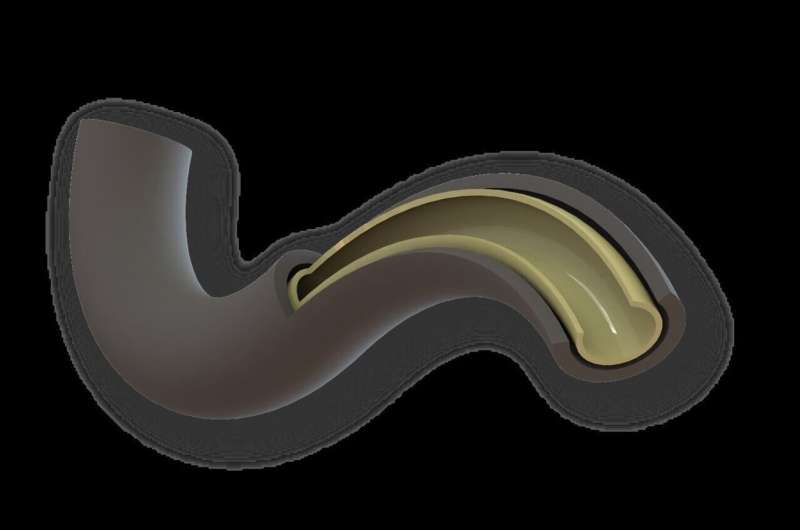
Using a newly-devised complex algorithm, the researchers have created a perfectly choreographed "dance" using two robotic arms, continuously retaining a clear space between them—where a patient's body would fit—as well as ensuring a consistent magnetic field.
Their innovative robotic system, previously developed at the University of Leeds, uses two robotic arms, each moving a large permanent magnet, to steer magnetic medical devices, such as the vine robots.
The unique two-step process, published in the International Journal of Robotics Research, meticulously charts the path of the two magnets, ensuring they will not crash into each other—or, crucially, into the patient lying in between them.
Additionally, the process ensures that the robots move in such a way that the magnetic field produced does not erratically affect the medical magnetic device—potentially inside a patient's body.
Safe, accurate control
The study's lead author, Ph.D. researcher Michael Brockdorff, carried out the research while conducting his Ph.D. in Leeds' School of Electronic and Electrical Engineering.
He said, "This paper shows that by using the trajectory planning algorithm we have devised, the dual External Permanent Magnet platform could be used to accurately control magnetic medical devices in a safe manner.
"We demonstrated this by navigating a soft magnetic robot through the tiny pathways of a brain phantom to the base of an aneurysm. From here, the appropriate drugs or medical devices could be deployed to treat it, or therapy could be delivered."
The STORM team worked in collaboration with Ryan K. Mathew, Associate Professor at Leeds and Honorary Consultant Neurosurgeon at the Leeds Teaching Hospitals NHS Trust.
The next step, if funding is secured, will be in-human trials, using cadavers.
Both this study, and another recent paper from STORM Labs, could significantly advance magnetic robot functionality
The other paper, "Vine Robots with Magnetic Skin for Surgical Navigations," is published in the journal IEEE Robotics and Automation Letters. It details how, inspired by plant movement, groundbreaking magnetic skin robots could transform cancer treatment.
More information: Michael Brockdorff et al, Hybrid trajectory planning of two permanent magnets for medical robotic applications, The International Journal of Robotics Research (2024). DOI: 10.1177/02783649241264844
Joshua Davy et al, Vine Robots With Magnetic Skin for Surgical Navigations, IEEE Robotics and Automation Letters (2024). DOI: 10.1109/LRA.2024.3412637
Citation: Trajectory planning could boost safety in medical robotics (2024, July 24) retrieved 24 July 2024 from https://techxplore.com/news/2024-07-trajectory-boost-safety-medical-robotics.html
This document is subject to copyright. Apart from any fair dealing for the purpose of private study or research, no part may be reproduced without the written permission. The content is provided for information purposes only.
